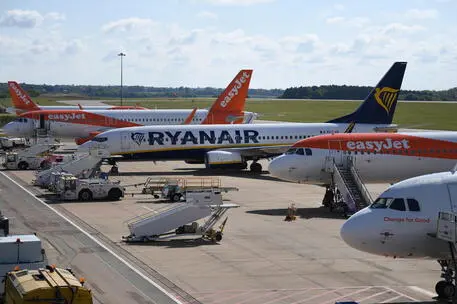Ryanair changes route, affecting Sardinian flights
In Spain and Germany the low-cost airline has already closed several basesPer restare aggiornato entra nel nostro canale Whatsapp
Spain's airports have been reeling for months. Valladolid has lost 60% of its passenger traffic in a year, Jerez is also licking its wounds, and things aren't much better in Vigo, Santiago de Compostela, and Santander. Five regional airports are now in serious trouble after Ryanair engaged in a head-to-head battle with Aena, the company (controlled by the ministry) that owns most of Spain's airports. Starting in 2026, a 68-cent surcharge will be imposed on all airline tickets, and the Irish low-cost carrier, which has been calling for tax cuts for years, has packed up. Two bases have closed, others have been significantly downsized. Ryanair will divert its Boeing aircraft elsewhere.
Not in Sardinia, where negotiations to strengthen the agreement with Michael O'Leary—the airline's longtime CEO—have stalled in recent months. The offer, made repeatedly, was clear: if the Region could eliminate the municipal surcharge on airline tickets (€6.50), Ryanair would be ready to increase traffic by two million passengers per year on the island, with an investment of €400 million. This plan has already been implemented—albeit with varying figures—in Friuli, Calabria, and Abruzzo. And in Sicily, at smaller airports like Trapani, where 23 new routes will be launched.
"We've already had several discussions with Ryanair. We immediately pointed out that Sardinia's passenger numbers aren't comparable to the much lower numbers in the Italian regions that have already implemented this measure, and therefore, consequently, the resources needed to sustain it over the course of an entire calendar year," explains Transport Councilor Barbara Manca.
"On our part, however, there has been and still is an openness to applying this measure during the winter months, in order to encourage an increase in connection opportunities, especially during periods when there has historically been a drastic reduction in supply. Discussions are continuing along this path with the Irish carrier and other potentially interested companies to concretely understand the potential benefits of implementing this measure by the Sardinia Region," the councilor clarifies.
The measure, which would encourage all airlines to increase their flights to the island, has a cost ranging from just over 10 million euros per year—enough to implement the tax cuts during the six-month low season—to the 35 million needed for a 12-month measure. But such a plan could generate hundreds of millions of euros in revenue.
Without intervention, the island would be at considerable risk. Sardinian airports are heavily dependent on Ryanair. Excluding routes under territorial continuity, the Irish carrier operates 80% of flights in Cagliari, 43% in Alghero, and 12% in Olbia. If it were to close down, as happened in Spain, it would be in trouble.
Also because Irish managers have shown they don't care who they are. In recent days, they announced a cut of 800,000 seats at German airports, "a direct consequence of the federal government's repeated failure to address the high costs of access to Germany." A press conference was scheduled for imminent release in Cagliari in recent weeks to present the winter schedule—the season officially begins at the end of the month—but for now the airline has chosen to postpone the event. In the meantime, they have cut several routes: Cuneo, Parma, and Rimini. This is not a good sign.
